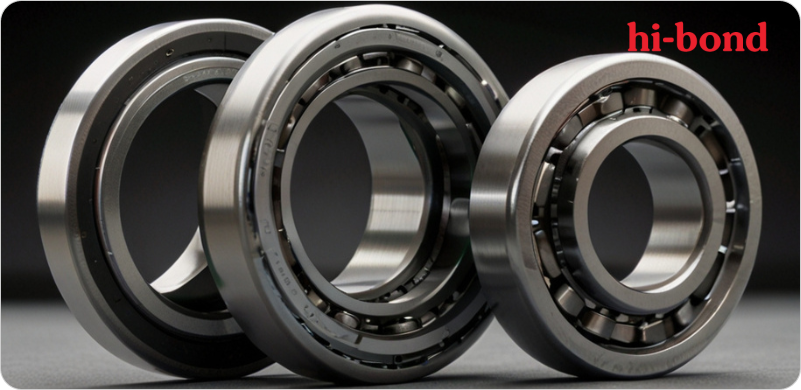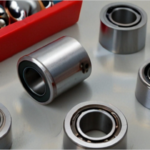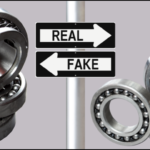Since the first ball bearing was patented in 1794, the bearing industry has come a long way, constantly evolving to meet the needs of the engineering and manufacturing sectors. These small yet essential components have provided smooth and efficient operations in different industries for centuries. As technology continues to progress, so does bearing technology. New concepts and designs have emerged as the latest trends in bearings.
As a leading bearing manufacturer, Hi-bond Bearing Pvt. Ltd. is at the forefront of this development by providing innovative solutions to meet the ever-growing demands of its customers. We invite you to read our blog post on how bearing technology shapes future demand and how it has revolutionized industries worldwide.
Dates Back to The History of Bearings—Industrial Revolution and Innovation
The concept of bearings dates back to ancient civilizations like Egypt and Mesopotamia around 2,600 BC. These early bearings were made of wood, stone, or animal hides and were used to reduce friction and move heavy objects. Over time, advancements in metallurgy and engineering led to the development of more sophisticated bearing designs.
The Industrial Revolution dates back in the 18th and 19th centuries brought about a major increase in manufacturing and mechanization. This period marked a turning point in bearing technology when Philip Vaughan, a British inventor created ball bearings that revolutionized various industries by reducing friction and improving efficiency.
The Modern Era Reaches Horizons in These Bearing Advancements:
The modern era of bearing technology is witnessing remarkable progress, empowering industries to explore new boundaries of innovation. Our bearing manufacturing company adapts these advancements with state-of-the-art manufacturing facilities that deliver quality solutions meant to meet and exceed the expectations of our valuable customers.
Self-Lubricating Bearings
One of the most effective trends in bearing technology is the development of self-lubricating bearings. These innovative bearings eliminate the need for regular manual lubrication, offering a hassle-free solution. Here are some key features and benefits of self-lubricating bearings:
- Auto Lubrication: Self-lubricating bearings come with built-in lubrication systems that ensure a continuous lubricant supply to critical contact points. It eliminates the need for external intervention or additional lubrication.
- Extended Service Life: With self-lubrication, bearings receive lubrication precisely when needed, reducing maintenance schedules. It reduces friction even in hard-to-reach areas to extend the lifespan of the bearings.
- Broad Temperature Range: Self-lubricating bearings can sustain optimal performance even in extreme temperature conditions, thanks to the timely and continuous lubrication they provide.
- Reduced Friction and Better Performance: By eliminating the need for external lubrication, self-lubricating bearings reduce friction, resulting in smooth and quiet operation. It contributes to improved machinery performance and reduced energy consumption.
- Resistant to Corrosion: Self-lubricating bearings protect against corrosion and harsh environmental conditions like exposure to moisture and chemicals. They ensure their longevity and reliability, even in demanding applications.
- Cost-Effective Solution: Avoiding frequent manual lubrication and reduced maintenance requirements make self-lubricating bearings cost-effective. They minimize downtime and the need for replacements, resulting in overall cost savings.
Precision Bearings
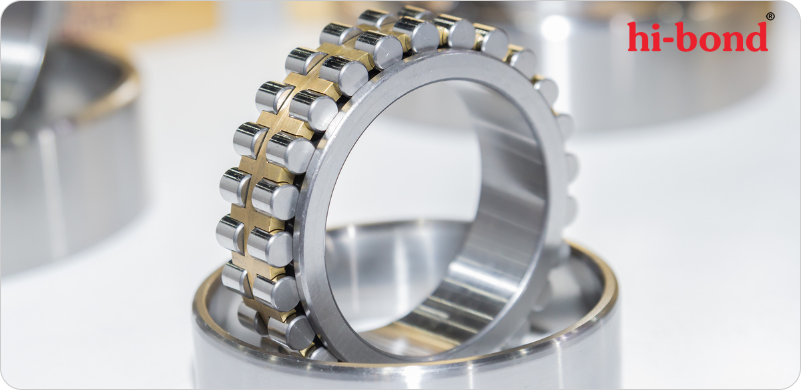
Precision bearings are synonymous with performance excellence that offer exceptional accuracy and reliability. These bearings are designed to minimize tolerance and maximize precision, making them vital in industries where even the slightest deviation can have major consequences. Check below for some notable features and advantages of precision bearings:
- Exceptional Dimensional Accuracy: Precision bearings exhibit consistent and exceptional dimensional accuracy across multiple bearings, ensuring uniform and reliable performance.
- High-Speed Capability: These bearings are engineered to reduce internal friction and offer exceptional efficiency at high rotational speeds. This makes them ideal for applications such as machine tools and aerospace components.
- Rigidity and Stability: Precision bearings possess superior rigidity and minimal load deflection, ensuring operational accuracy and stability even under demanding conditions.
- Quiet and Smooth Operation: Precision bearings operate with minimal noise and vibration, making them highly suitable for applications in medical devices, laboratory equipment, and other noise-sensitive environments.
- Customizable Designs: Precision bearings can be customized and adapted to meet specialized requirements in various industries, including aerospace, automotive, and medical devices. This flexibility allows for optimal performance in specific applications.
- High-Quality Materials: Precision bearings utilize high-quality materials such as chrome steel, ceramic, or stainless steel, ensuring longevity, durability, and resistance to wear and corrosion.
- Strict Quality Assurance: Rigorous testing and quality control measures are implemented to meet demanding industry standards, ensuring that precision bearings perform at their best and deliver consistent results.
Ceramic Bearings
Ceramic bearings represent a leap in bearing technology by offering superior strength, corrosion resistance, and temperature stability compared to traditional steel bearings. These advanced bearings find applications in demanding environments and high-speed machinery. Have a look at the features, benefits, and applications of ceramic bearings:
- Superior Strength and Durability: Ceramic materials, such as silicon nitride or zirconia, provide exceptional strength and durability, enabling ceramic bearings to withstand heavy loads and harsh operating conditions.
- High Corrosion Resistance: Their hybrid bearings with stainless steel rings exhibit superior corrosion resistance compared to traditional steel bearings. This makes them highly suitable for applications exposed to water, detergents, chemicals, and corrosive environments.
- Real-World Applications: Ceramic bearings are used in aircraft generators, high-speed machines, mills, grinders, pumps, compressors, and more. They are also used in aerospace and space exploration due to their lightweight, improved flight dynamics, and vacuum compatibility. These bearings are also suitable for chemically exposed areas and high-speed, heavy-load applications.
- Longevity and Maintenance: Ceramic materials have a longer lifespan than traditional steel bearings and require less maintenance. Their wear-resistant properties and low rolling resistance contribute to reduced heat generation and longer lubricant life, resulting in cost savings and high operational efficiency.
Smart Bearing Technology
Smart bearings are at the forefront of innovation in the age of advanced machinery. Here are the features of smart bearings:
- Implanted Sensors: These sensors monitor various parameters in real-time, collecting data on vibration, load, temprature and other factors affecting bearing performance.
- Real-time Monitoring: Continuous feedback on the operational status of bearings allow for proactive monitoring, predictive analytics to prepare for concerns and plan maintenance.
- Ease in Connectivity: Smart bearings are designed to integrate with Internet of Things (IoT) platforms that empower operators to manage bearings from a central location remotely.
- Condition Monitoring: Smart bearings can assess longevity and create an early warning system to control unexpected failures.
- Energy Efficient: The ability to adjust operational parameters based on real-time data contributes to energy efficiency. Proactive monitoring minimizes unexpected breakdowns, reducing the energy consumption associated with downtime.
- Diagnostic Abilities: Smart bearings can diagnose faults and irregularities within the machinery, providing detailed insights into the root causes of issues. This is vital for developing effective maintenance strategies.
3D Printed Bearings
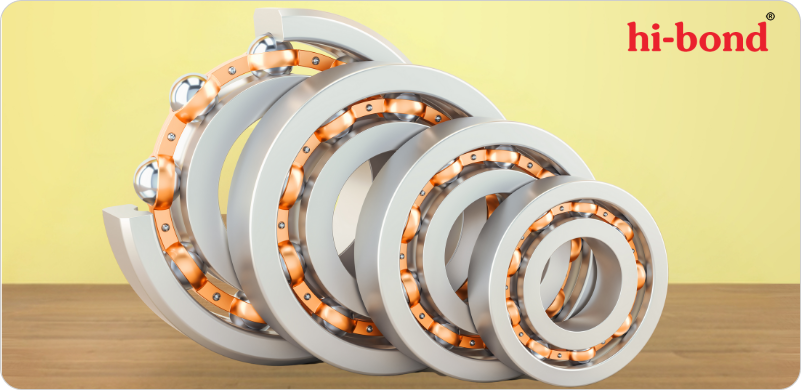
The rise of 3D printing has unlocked remarkable possibilities in manufacturing, extending to the realm of bearings. 3D printed bearings offer unparalleled customization options, allowing for intricate designs and geometries that were once thought impossible. Look at the features of 3D printed bearings:
- Custom Designs: 3D printing allows for creating bearings with intricate and customized geometries that precisely fit unique machinery requirements.
- Variety of Materials: This specification supports the use of various materials, including composites, which help create hybrid bearings for enhanced performance.
- Lightweight Construction: 3D printed bearings can be designed with lightweight structures without compromising strength, ideal for applications where mobility and agility are critical.
- Intricate Internal Structures: Allows for the creation of complex internal structures within bearings, optimizing load distribution and reducing stress points.
- Fast Prototyping: It means quick iterations and modifications during the design phase, which results in reduced development costs and better outcomes, especially for large bearings.
- Ingenious Applications: Unconventional shapes can be achieved with 3D printing, opening up possibilities for innovative applications.
Other Bearing Transformations
As the bearing industry transforms, important considerations exist beyond smart and 3D printed bearings. These considerations include:
- Protection of Green Environment: With the increasing awareness of global environmental protection, the bearing industry keeps up with the green development trend. Developing environmentally friendly materials and optimizing production processes will become new highlights for bearing companies to attract customers.
- Customized Services: With the diversification of consumer demands, the trend of custom-made products offered by bearings and bushes suppliers has become obvious. Providing personalized, customized services will help bearing companies stand out from the competition.
- Energy Saving: It has become an important trend worldwide, and the bearing industry will also pursue more energy-saving product designs. Measures such as using low-friction materials, reducing lubricant consumption, and optimizing sealing structures are used to reduce energy consumption and pollution.
Interesting Developments in Bearing Technology: Industry 4.0 is The Era of Smart Factories
The future of bearings welcomes Industry 4.0, the fourth industrial revolution that has brought us smart factories powered by advanced concepts of bearing technology named as Internet of Things (IoT), Artificial Intelligence (AI) as well as Robotics. With these innovations, bearings, the components that enable smooth motion in machines, must adapt to meet the evolving demands of smart factories.
In this digital age, smart factories integrate machines, communication mechanisms, and computing power, driving automated processes, data analysis, and continuous learning. This interconnected network enables real-time coordination and automated processing, revolutionizing the manufacturing landscape.
As a result, Smart Bearings have fulfilled the need for predictive maintenance and control over real-time data and performance statistics within smart factories. These advancements give engineers valuable insights into lowering costs, boosting productivity, and improving quality control.
The benefits extend beyond manufacturers, as consumers also benefit from improved product quality and supply chain traceability. The rise of smart factories and bearings is transforming the manufacturing ecosystem, enabling flexibility, resilience, and improved customer experiences.
A Bright Future Ahead for Bearing Technology!
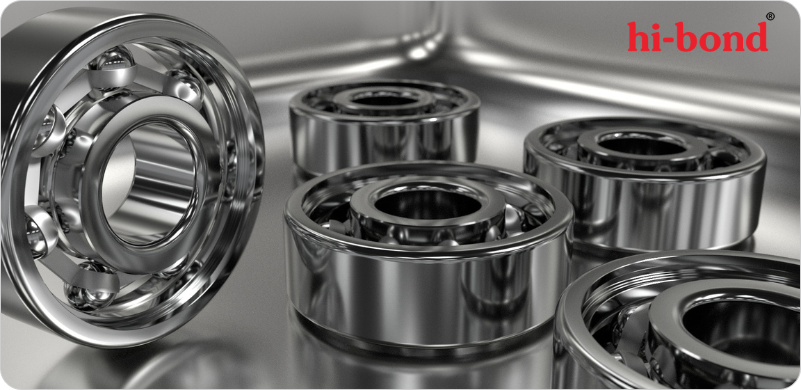
As trends in bearing continue to develop, they are revolutionizing industries and driving technological advancements worldwide. Through the persistent pursuit of innovation Hi-bond Bearings Pvt Ltd. is on the verge of a transformative era in advanced bearing technologies.
Future bearings will require minimal maintenance and offer advanced materials, customization options, precision engineering, and embedded sensors for real-time data. It will lead to more eco-friendly solutions and pave the way for a more efficient and interconnected world.
The future of bearing technology promises incremental improvements and a complete reimagining of what bearings can achieve. Hi-bond embraces these improvements in bearing products and can say that the future with advanced concepts of bearing technology is set to redefine the very essence of industrial operations.

